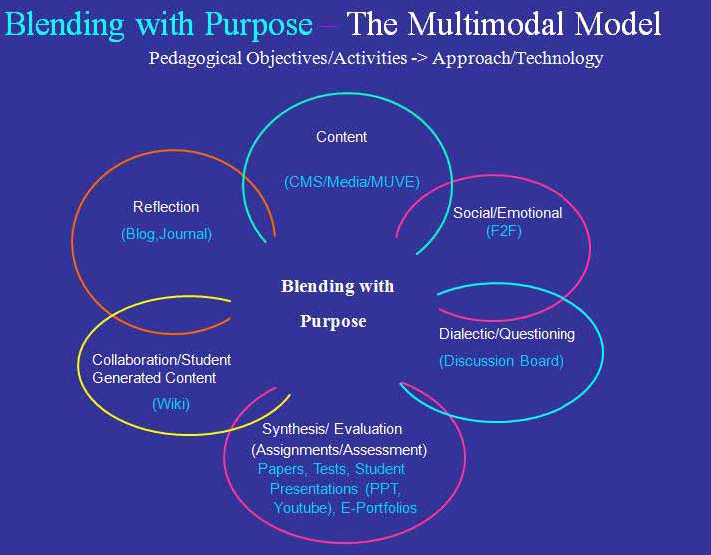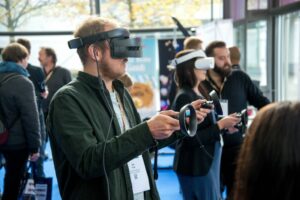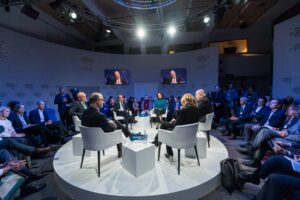This is part three of my series of how to explore the many opportunities of learning and teaching online. The aim of this series is to make you familiar with the basics, potentials and risks, interactive elements, and the strategies you can use to develop and implement successfully blended learning environments. Not all students, teachers, academics are aware of the possibilities that were behind online learning. This series provides practical tips and takes you through the process of development of online learning courses. For an introduction see part one and part two.
What is Blended Learning?
Blended learning is a form of learning that combines and integrates the advantages of traditional face-to-face courses and modern forms of e-learning.
Blended Learning is an integrated learning concept that makes optimal use of the currently available possibilities of networking via Internet or Intranet in combination with ‘classic’ learning methods and media in a meaningful learning arrangement. It enables learning, communication, information and knowledge management, independent of time and place, in combination with exchange of experience, role play and personal encounters in classical classroom training. (Sauter & Bender, 2004, p. 68)
The hypothesis that learners acquire more knowledge and skills in blended learning courses than in traditional learning settings or in fully online courses has been confirmed in various ways. A meta-analysis funded by the US Department of Education comparing learning outcomes from online, face-to-face and blended learning courses showed significant positive effects in courses delivered in a blended learning format (Means, Toyama, Murphy, Bakia & Jones, 2010). Blended learning can therefore be regarded as an equivalent teaching format not only in vocational learning but also in university, technical and school didactics (Picciano & Dzuiban, 2007).
A helpful approach in this context is Tony Picciano’s (2009) model of Blending with Purpose:
“It recommends that pedagogical objectives and activities should drive the approaches that faculty use in instruction. It also suggests that blending these objectives, activities, and approaches within multiple modalities might be most effective for and appeal to a wide range of students. The model presents six basic pedagogical objectives/activities and approaches for achieving them. It should be a given that other objectives can be added where appropriate. The most important feature of this model is that instructors need to carefully consider their objectives and understand how to apply the technologies and approaches that will work best for their students.” (Picciano, 2009, S. 11)

The Blending with Purpose model states that teachers and learning instructors (learning designers) should try to combine and integrate several approaches to teaching and learning in blending learning courses. These approaches include a variety of individual teaching-learning methods as well as learning technologies that are tailored to the learning needs of a heterogeneous spectrum of students. By triangulating these methods and technologies, learners should be able to experience a learning environment that promotes well-being, diversity and motivation as well as knowledge and competence growth. Against this background, learning outcomes and pedagogical objectives should always determine the choice of appropriate learning activities and technologies.
The model follows six levels and objectives for the design of the teaching-learning environment and for the application and use of learning technologies:
- Teaching contents: e.g. CMS, media, multi-user environments
- Social and emotional participation: e.g. face-to-face communication
- Reflection: e.g. blogs and journals
- Dialectical or question methodology: e.g. discussion forum
- Collaboration and learner-generated content: e.g. Wiki
- Synthesis, evaluation and assessment: e.g. submission tasks, tests, presentations, e-portfolio
Flipped Classroom
The Flipped Classroom has become one of the most popular forms of blended learning. Behind the often synonymously used terms “Inverted Classroom” (in university didactics), “Flipped Classroom” (in school didactics), “Reversed Teaching” or “Backward Instruction” (in learning theory) lies an instructive teaching-learning concept. Within this framework, the traditional learning arrangement (in-class) is enriched by instructive teaching-learning methods and elements of online and distance learning outside of the course (out-of-class; such as e-lectures, videos, self-study tasks) and the in-depth and application tasks within the framework of self-study, which are downstream in the traditional learning arrangement of the course and represent parts of the self-study after the course, are (pre-)moved to the interactively designed classroom course.
In a nutshell, learners can acquire basic learning content with multi-media and multi-methodological support before the actual classroom-based course. The aim of the face-to-face event, on the other hand, is to deepen and broaden knowledge and to systematically anchor previously acquired learning content.
New learning technologies: Continuous change
Technological developments and digitalisation have changed almost all areas of life in recent years; this also applies to the university, subject and school didactics. In the higher education landscape, the MOOCs (see above) in particular have led to an expansion of learning opportunities (Christensen, Horn & Johnson, 2011).
The technologies with which we support online and blended learning, the way we structure online and blended courses, and the business models on which online learning and didactic action depend are developing rapidly in the course of this change.
For the design of online teaching, it is important to know the functions of different technologies, their potentials and risks and to use these in a purposeful, dosed and goal-oriented way.
In summary, interaction is an essential feature of good quality online teaching. When designing teaching, care must be taken to create various possibilities for optimal interaction between teachers, learners, the subjects taught, and the learning technology used.
References (see part one)









